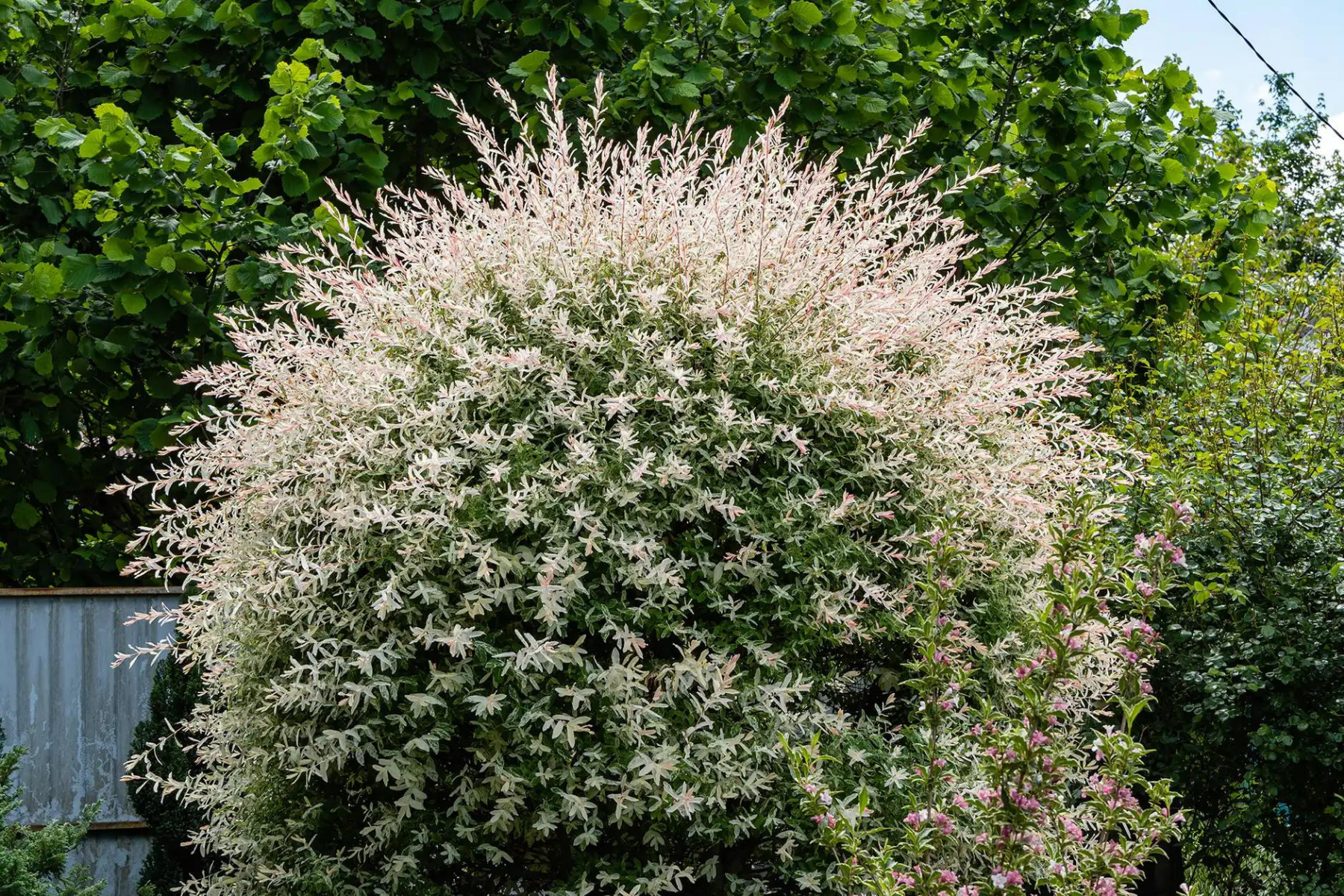Last Updated on June 7, 2022 by Real Men Sow
The flamingo tree (Salix Integra ‘Hakuro–nishiki) is a dwarf willow. It is popular for its colorful spring foliage, which is a marled mix of green, white, and flamingo pink tips. The leaves turn green in summer, and then the coral-orange stems emerge in autumn. Yellow catkins emerge before the leaves return in spring.
What’s a Flamingo Tree?
The flamingo tree, also known as the shrimp willow or flamingo, is a compact shrub and small tree that can be planted in small gardens. This tree is often sold as a standard or “lollipop” tree that has been grafted onto the rootstock of another willow variety.
How To Grow A Flamingo Tree
Your flamingo tree should be grown in moist, well-drained soil in full sun to dappled shade. Standard trees can be grown in a pot provided they are well-watered. If you wish, prune in winter and again in summer.
Find A Sunny Spot For the tree
Your flamingo tree should be grown in well-drained, moist soil with access to full sun. It looks great in urban or contemporary gardens as well as in Japanese-style plantings. Standard plants can be grown in pots, either on the patio or along a doorway.
Steps to Plant a Flamingo Tree
- Dig a hole the same depth as your root ball. Add lots of compost or well-rotted manure to the hole.
- Place the root ball into the hole until its surface meets the soil. Fill the hole with soil
- Water in well
- Mulch is a good way to retain moisture after you have planted.
Use a John Innes No.3 peat-free compost if you are growing a standard tree inside a pot. As the plant grows, you can continue to pot it in a larger container.
General Care for a Flamingo Tree
Watering and Feeding
In dry weather, water plants can be grown in the ground. Keep the compost moist if you are growing a flamingo plant in a pot. Use a balanced fertilizer to fertilize your flamingo tree in spring. Mulch the soil with well-rotted manure, garden compost, or a balanced fertilizer in spring to retain moisture.
Pruning
A late winter prune can encourage lush leaf growth and lots of new pink leaves. Trim the growth by approximately one-third. Remove any damaged, dead or diseased shoots and any that are not growing in the right direction. Trim any sprouts from the grafted stem. To encourage new pink growth, you can trim the stem lightly in summer.
How To Propagate A Flamingo Tree
By taking softwood cuttings in spring, summer and autumn, or hardwood cuttings during winter and fall, you can easily propagate flamingo willows.
Problems when Growing Flamingo Tree
Poor Leaf Color in Spring
This could be because of the lack of sunlight. Keep in mind that leaf tips become pinker in spring and turn greener later in the season.
Brown Leaves
This could be due to wind, sun damage or lack of water. While Flamingo trees thrive in sunny locations, they can become scorched by the sun in hot weather. If this happens, you should temporarily move to a more shaded area. Potted trees can dry quickly so you might need to water them every day during very hot spells.
Willow Aphids
While they won’t harm the plant, the honeydew these aphids excrete may form sooty mold. This is undesirable and can cause photosynthesis to be impeded. That’s why you should splash with water or squash them by hand if there’s an early infestation.
Rust
It appears as yellow spots on the leaves’ tops and orange pustules under the leaves. As soon as possible, remove any affected leaves and pick up any fallen leaves.
Canker
Willows can also be affected by this. Be on the lookout for leafless shoots or distorted bark and immediately remove affected areas.
Willow Anthracnose
Fungal disease that causes dark brown or brown spots on the leaves and raised lesions along the stems. It’s most common in the early spring, when the air is damp and cool. Clear away any fallen leaves and prune affected areas quickly.
Honey Fungus
It may cause damage to plants that are growing in the soil.


